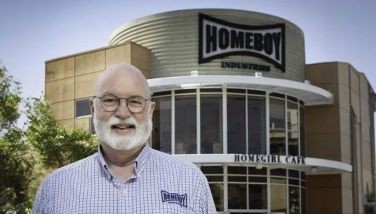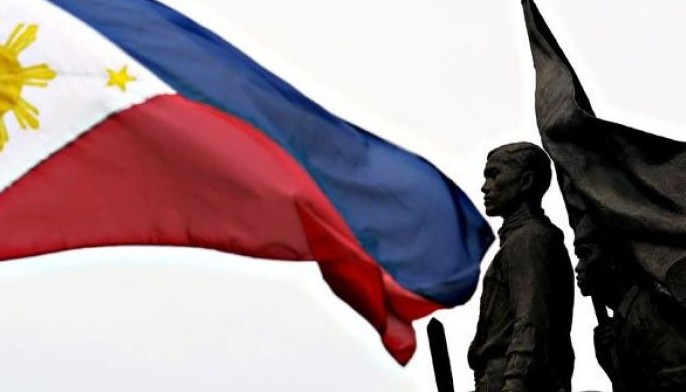To love and serve, the Jesuit way

Tomorrow marks the birth anniversary of an outstanding Jesuit, Bishop Federico O. Escaler, S.J., who passed away last November while his biography was being written. He would have been 94 this year.
Bishop Freddie lived a full life, as dramatic as it was rife with irony — from his early choice to pursue a religious vocation even if he came from a wealthy family with landholding roots in Pampanga, and was already becoming known as a “society boy” as a high schooler from Ateneo de Manila.
He entered the seminary several months before the Japanese occupation, but went on to complete his long years of religious studies until he was ordained to the priesthood in 1954 at Fordham University Chapel in New York by no less than Francis Cardinal Spellman.
The Jesuit life followed, back in Manila and with subsequent assignments in Mindanao, including serving as rector and president of Ateneo de Davao thence Xavier University. Upon his episcopal ordination in 1976 at the Manila Cathedral, with the great Filipino Jesuit scholar Fr. Horacio de la Costa, S.J., delivering the homily, he became the first bishop-prelate of Kidapawan in North Cotabato, and four years later, of Ipil in Zamboanga del Norte.
That was where the most dramatic episode in his life transpired, when he was kidnapped by Moro rebels in 1985. Released after a four-day ordeal in the jungle, he asked for an audience with then President Marcos, to whom he gave thanks for the military action, but also intimated that his soldiers were suspected to have been behind the charade to teach the Jesuits in Mindanao a lesson.
Ten years later he witnessed the town’s pillage, and courageously helped the survivors of a massacre that took over 50 lives. He served Ipil for a total of 17 years, until his retirement in 1997 at the age of 75.
Following are excerpts, sparse as they are, from different chapters of a forthcoming book to be titled To Love and Serve: The Life of Bishop Federico O. Escaler:
Nicknamed Freddie, the third youngest of the Escaler brood grew up under the care and tutelage of his mother as well as that provided by his older siblings….
Even in his senior years, Freddie still retained cherished memories of his father, how the much accomplished man would walk with his wife and children to the nearby San Beda College chapel for Mass early on Sunday mornings, or to San Sebastian Church several more blocks away, then troop back with everyone for breakfast.
They were all born in the very house on 346 San Rafael Street, San Miguel district in Manila, that their father had built for their mother upon their marriage. It stood on a large lot on the corner of Arlegui and San Rafael Streets, a stone’s throw from Malacañang Palace, the official residence and office of Philippine presidents….
Freddie was first enrolled at what was then called Holy Ghost College (now the College of the Holy Spirit), a private school run by the Missionary Sisters Servants of the Holy Spirit….
It was a very short walk from the Escaler house. Freddie entered the kindergarten class, and stayed till after grade two, when he joined his older brothers Ernie and Joe in Ateneo de Manila in Intramuros, the so-called “Walled City” that was originally Spanish Manila.
A disastrous fire broke out in the Jesuit school for boys within the historic Walled City, so that all the students had to be transferred to the Ateneo campus on Padre Faura St. in the Ermita district of Manila.
In his last interview when he was already 93 years of age, Bishop Federico O. Escaler, S.J. recounted that he was in school on that day in 1933 when it was engulfed in flames. He was 11 years old and in grade six.
He also recalled how they were usually driven to school when the car was available.
“In the morning, the driver first brought my sisters to Holy Ghost, then came back for us boys to take us to Ateneo High School on Padre Faura — Ernie, Joe, Manuel and myself. I was the second youngest among the boys, older than Manuel. When the car was being used elsewhere, I used to walk home, all the way from Padre Faura. Along the way was my favorite hamburger sandwich place, the Tom Dixie….
“You could say I was a scholar, near the top of the class. Among my classmates and rivals was Jobo Fernandez, who was brilliant, and who would become the Central Bank Governor in the time of President Ferdinand Marcos….
“There was the usual Jesuit arrangement of sports teams being raised from every class, and the teams contended against one another in soccer, basketball and other athletic competitions. I was too fat at the time, so that in basketball I was just fielded in to push the other guys around. The real athletes were my brother Joe and Manuel, who was the captain of the basketball and tennis teams.”
Justice Renato Puno, the distinguished lawyer who rose to become a remarkable light in the field of Philippine jurisprudence, … still recalls many details of those early years….
“We were both around 14 or 15 years old when we first became classmates and friends…. Freddie was very highly respected by all our teachers….
“The favored girls were from Assumption College and St. Scholastica’s College. The more strategically located was Assumption, because there was only a boundary fence built of stone between our campus and theirs. On the Ateneo side was a field used for military drills and parades, and across was Assumption. Whenever we had any parade, the girls were there peering at us from their windows.
“Freddie was what you’d call a regular guy. We were normal teenagers, with interests centered mostly on girls. And he was certainly one of us as far as that natural inclination was concerned. In fact he had many girl friends. Many girls really admired him….
“When Freddie decided to enter the priesthood and he finally had to leave home to report to the seminary, he privately and secretly asked those closest to him to just keep him company on that last day. He was actually on the verge of tears.
“So some of us, the chosen few as it were, went to his house which was close to Malacañang Palace. And we were waiting for the entire group that was going to bring him over to the seminary. And some of the girls who were his admirers also visited him.
“So of course we kept on kidding him. We were saying, ‘Freddie, your will power is very strong. Imagine, you’re about to enter the seminary and here are your admirers, and you’re still determined to go ahead and do it.’”
… In his last interview, a few months before he passed away, the man his younger relations fondly called “Bish” could still recall the time when he made (that) decision.
“I discussed it first with my brother Ernest. The next thing was how to tell my mother. She simply said, ‘You’ll come out after several weeks, now don’t disgrace the family.’ That was what she said.
“But I continued to speak to her, until I finally convinced my mother that it was a serious decision on my part. And since that time I never looked back.”
Fr. Joe Qilongqilong, S.J. had first met Bishop Escaler when he studied in Xavier University in Cagayan de Oro from 1979 to 1882. In the early 1990s, the bishop would also visit the St. John Vianney Theological Seminary in Cagayan de Oro, of which he was a benefactor.
Fr. Qilongqilong recalls:
“He supported seminarians there, and I was vice rector in the seminary. He also sent seminarians from the Prelature of Ipil.
“In terms of quality interaction, however, it was really in 2007 when I was in Rome and he had visited that was very memorable.
“He came with members of his family to attend the canonization of St. Marie Eugenie. I was asked to assist him, being a Jesuit Bishop, and I was in the Jesuit Curia. So I was requested by the family to accompany the bishop to the events in Rome.
“I remember that during the canonization, it rained the whole time, so after the Gloria, I had to take the bishop away from St. Peter’s Square because he was already shivering. He was very wet with rain, and I was concerned about his health.
“So I brought him to the Curia while the rest of the family remained in St. Peter’s Square, except for Ernest Escaler who came with us. While waiting for the rest, I suggested to the bishop that we visit the Jesuit archives in the General Curia of the Jesuits.
“Since my work then in Rome was as regional secretary of Asia-Pacific, I had access to the archives. I brought him to the section of the Philippine jurisdiction and showed him a copy of his solemn profession as a Jesuit made about fifty years earlier….
“He read again his vow as a Jesuit, and also a copy of the document where he renounced his properties and his inheritance as a Jesuit — because when you make your final vows, you renounce any possessions. And he was laughing when he reviewed what he wrote, that his properties would go to his siblings, I think….
“But the supreme highlight of that visit was when the archivist showed him what we call ‘The Treasures of the Society.’ We went to another section where we have this vault, and the archivist opened the vault and took out the original diary of St. Ignatius of Loyola. And he asked the Bishop to hold that diary and even open its pages so he could read the handwriting of St. Ignatius. The diary was written in 1538….
“So, again, Bishop Escaler was so moved, nearly to tears, when he saw these items and held them in his hands.
“The following day, he celebrated Mass in the room of St. Ignatius, where St. Ignatius had died.
“So I would say that his visit to Rome was really, in a way, a recalling of his roots as a Jesuit. As a young Jesuit, I was also very moved at seeing him so happy and so consoled. For him it must have felt like an affirmation that his years with the Jesuits were really years of that commitment as a religious. And seeing those original items from the time of St Ignatius really gave him so much joy.
“He was teary-eyed when he was shown the items. ‘Wow,’ he said, ‘these are all the items of St. Ignatius, his very diary.’ He could not believe that he was holding history right there, from the time of St Ignatius himself. It was really a connection with the founder.”



















